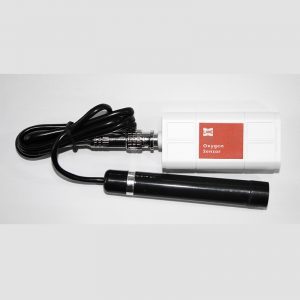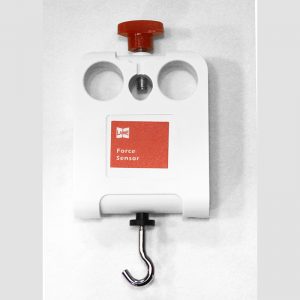Wireless Relative Air Pressure Sensor with syringe
August 1, 2025
Wireless Oxygen Sensor with probe
Range: 0~100%, Resolution: 0.1%
I. Working Principle
The working principle of the oxygen sensor is similar to that of a dry cell, with the zirconia element in the sensor acting as an electrolyte. Under specific conditions (high temperature and platinum catalysis), the oxygen concentration difference between the inner and outer sides of the zirconia generates a potential difference, and the greater the concentration difference, the larger the potential difference.
II. Specifications
Range: 0~100%, Resolution: 0.1%
III. Structure and Functions
1. Equipped with a 1.8-inch color LCD screen.
2. Configured with 5 functional buttons for simple and convenient operation.
3. Supports high-speed USB data transfer for fast communication with data acquisition devices.
4. Supports wireless communication with experimental terminals.
5. Built-in large-capacity removable battery.
6. Features a sensor interface with snap fasteners, compatible with standard sensors for combined experiments.
7. Includes a fixed position for mounting on an iron stand to integrate with traditional equipment.
8. The sensor supports iOS, Android, and Windows systems.
IV. Typical Applications
The O2 sensor can measure the concentration of gaseous oxygen in various biological and chemical experiments. Its typical applications include measuring oxygen concentration, studying photosynthesis, investigating biological oxygen demand, and examining chemical reactions involving or producing oxygen, among others.
V. Note
This product is suitable for educational use only and is not intended for industrial, medical, research, or commercial applications.
VI. Usage Tips
1. The sensor must be powered on and preheated for 12 seconds before measurement.
2. Do not immerse the sensor in any liquid. This sensor is designed for measuring gaseous oxygen and cannot be used to measure dissolved oxygen in water.
3. When the oxygen sensor is not in use, the probe should be stored vertically. This is crucial for proper storage and maintenance, as incorrect placement will shorten the probe’s lifespan.
4. Storage temperature range for the oxygen sensor probe: 0–50°C.
5. Operating temperature range for the oxygen sensor: 0–50°C.
6. Response time: Achieves 90% of the reading within 14 seconds.
7. Lifespan of the oxygen sensor probe: 3 years.




Reviews
There are no reviews yet.